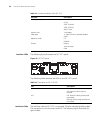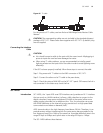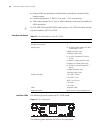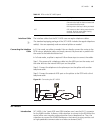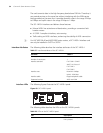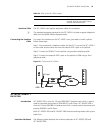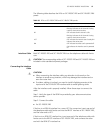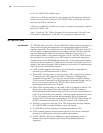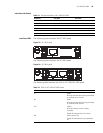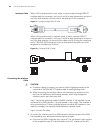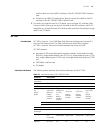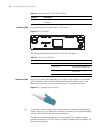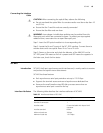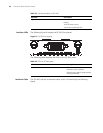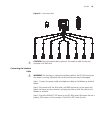
58 CHAPTER 2: SMART INTERFACE CARDS
■ For SIC-1BU/SIC-2BU interface card
If the line is an ISDN U-interface line, insert one end of the telephone cable with
ferrite core into the BRI U interface of SIC-1BU/SIC-2BU, and connect the other
end with the ISDN U-interface line.
If the line is an ISDN S/T interface line, contact your agent to change the interface
card to SIC-1BS/SIC-2BS.
Step 3: Check the “ON” LED on the panel of the interface card. If the LED is on,
the interface is powered on. If the LED is off, contact your agent for help.
SIC-1BSV/SIC-2BSV
Introduction SIC-1BSV/SIC-2BSV is short for 1/2-port ISDN BRI S/T voice interface card, which is
mainly used to process (receive/transmit and compress/decompress) the ISDN
interface voice traffic. The interface(s) on the SIC-1BSV/SIC-2BSV card is (are) ITU-T
I.430-compliant, adopting pseudo-ternary coding, providing 192 Kbps interface
rate, and allowing the maximum transmission distance of 1 km (0.6 mi.) in
point-to-point mode. In the upstream direction, the SIC-1BSV/SIC-2BSV card can
be connected to a user interface on an ISDN switch to receive and decompress,
compress and transmit ISDN BRI digital voice traffic. In the downstream direction,
the card can be connected to a TE device to forward the voice packets from the TE
device to the Internet through a WAN interface on the router, thus implementing
VoIP. The card has the following features.
■ A BSV interface supports two modes: user and network, respectively for
connecting an ISDN network and a TE device.
■ When a BSV interface works in network mode, traffic is processed as follows:
The digital voice traffic received on the BSV interface is compressed and
forwarded through the CPU on the main control board to a WAN interface.
The IP voice traffic received on a WAN interface is forwarded through the CPU
on the main control board to SIC-1BSV/SIC-2BSV, where the traffic is
decompressed and sent to the TE device.
■ When a BSV interface works in user mode, traffic is processed as follows: The
digital voice traffic received from the B channels on the BSV interface is
decompressed and forwarded through the CPU on the main control board to a
local FXS or FXO analog voice interface. The voice signals received on the local
FXS or FXO analog voice interface are processed by VoIP and forwarded
through the CPU on the main control board to SIC-1BSV/SIC-2BSV, where the
traffic is compressed and sent out of the BSV interface to the ISDN switch.
■ Working in conjunction with the FXS or FXO analog voice interface modules,
SIC-1BSV/SIC-2BSV provides flexibility in voice call routing.
■ The ISDN BRI D channel signaling is processed separately on CPU.
■ A BSV interface supports remote power supply and thus can be connected
directly to an ISDN phone, saving extra power supply device.
■ The SIC-1BSV/SIC-2BSV card is dedicated to voice applications, which is
different from the BS interface cards where BRI data applications are
supported.



